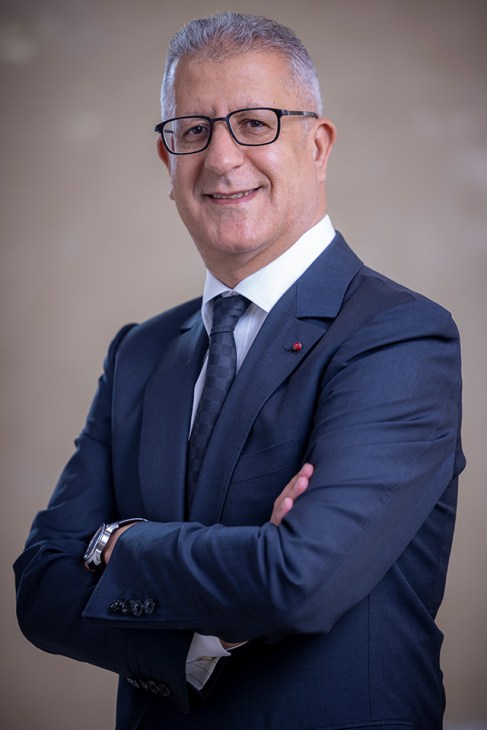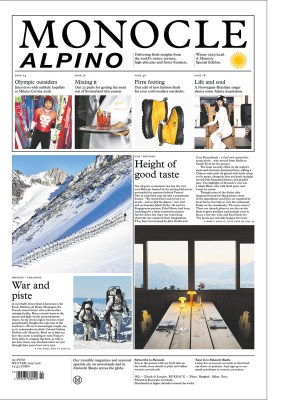Morocco on the move
Hosting landmark international events is only possible with world-class infrastructure already in place. From the bustling terminals of Tanger Med to the high-speed Al Boraq railway, Morocco is a country primed for a successful 2030 Fifa World Cup – and beyond.
Power of flight
Safran
Near Casablanca, two major new facilities will create jobs and allow Morocco to join rarified company as an aircraft engine manufacturer.
In October, His Majesty King Mohammed VI presided over the launch of a major facility by Safran in the Midparc industrial zone at Nouaceur. This €350m investment will house two cutting-edge units: one for the assembly and testing of LEAP-1A engines (used in Airbus aircraft), and one for maintenance and repair operations. Anchored in the aeronautics value chain, the project is expected to generate about 900 direct jobs by 2030 and firmly entrench Morocco as a global air-engine manufacturing hub. With this facility, Morocco becomes only the sixth country worldwide to produce aircraft engines – a landmark step in its industrial maturation and a clear signal of the Kingdom’s ambition to move further up the aviation value chain.

Aiming high
Stability and investment have seen Morocco’s aerospace export revenues rise from less than MAD1bn (€90m) to over MAD26bn (€2.4bn) in the past 20 years.
Shipping forecast
Tangier Med Port
The busiest port in North Africa is a key component of Morocco’s growing status as the continent’s logistics hub.
In 2024, close to the northernmost tip of Morocco (and Africa), Tangier Med Port handled more than 10 million containers – a fifth higher than 2023. It is truly the gateway to the continent, both in functionality and aesthetics, as illuminated loading winches light up the rugged coastline of the Strait of Gibraltar at dusk.

Sky’s the limit
Royal Air Maroc
Morocco’s flag carrier is one of the biggest airlines in Africa and a keystone of the country’s inbound business and tourism offering.
Morocco is about to turn into an aviation giant; a new government development agreement will see its fleet expand from 50 to 200 aircraft by 2037. Mohammed V Airport in Casablanca, Royal Air Maroc’s base, will become a global connections hub. In October, Royal Air Maroc partnered with China Eastern Airlines to increase flights between the two countries and connect Chinese cities with Africa. It is also building up its long-haul network in Asia and the Americas.
“The market is there,” says Royal Air Maroc chairman Abdulhamid Addou. “We have about 50 competitors but we are one of the few airlines with a strong development plan.”

Taking off
Morocco announced a $2.8bn (€2.4bn) programme to upgrade its aviation infrastructure by 2030, including expansions and a new Casablanca airport.
Making tracks
ONCF
After establishing Africa’s first high-speed line, the Moroccan National Railways Office (ONCF) is strengthening a wide and ambitious network.
The development of the Moroccan railway network over the past 20 years echoes the country’s rapid growth. Both relied on a proactive strategy, healthy investment and government backing. The 2018 launch of Al Boraq – the first high-speed rail line in Africa – made the headlines but progress continues at pace, as Mohamed Rabie Khlie, director general of ONCF (Moroccan National Railways Office), explains.

How has Morocco developed its railway network so rapidly in the past two decades?
Since His Majesty King Mohammed VI’s accession to the throne, Morocco has undertaken a profound transformation of the railway sector, marked by massive investments and rigorous planning. These efforts have resulted in the construction and modernisation of numerous stations, the doubling or tripling of existing lines, and the strategic connection of major economic hubs – notably the Tangier Med port and the city of Nador. One of the most striking symbols of this transformation is undoubtedly the 2018 commissioning of Al Boraq, the first high-speed rail line in Africa. Today, this momentum continues with a new generation of projects planned for 2030, supported by a total investment of MAD96bn (€9bn). It is the combination of an enlightened royal vision, long-term strategic planning and expert execution that has enabled Morocco to establish itself as a continental benchmark in rail transport.

How important is station design when building a new railway network?
The design and location of stations play a strategic role in the construction of a modern and efficient rail network. Today, stations are no longer limited to their primary function of transit: they have become true integrated urban hubs, designed to facilitate mobility and enrich the passenger experience. Designed as fully-fledged living spaces, they intelligently combine transport services, retail offerings, dining areas and social spaces, helping to reshape the urban landscape and enhance the appeal of city centres. This vision transforms the train station into a driver of regional development, while simultaneously reinforcing railways as the preferred mode of transport, synonymous with safety, comfort, modernity and sustainability.

How is Morocco preparing its transport network for the influx of visitors expected during the 2030 Fifa World Cup?
The ONCF is working to prepare the national rail network for the expected influx of visitors for the 2030 Fifa World Cup through a series of structuring projects, all part of an integrated and coordinated vision developed in collaboration with all institutional stakeholders. The Kenitra-Marrakech high-speed rail project, part of our Office’s investment programme for 2030, clearly illustrates this dynamic. This new 430km line will directly connect the main Fifa World Cup cities and host stadiums, while also connecting to the existing line from Fez. In addition, the deployment of local rail services aims to decongest existing lines and strengthen urban and suburban mobility in three major metropolitan areas: Casablanca-Settat, Rabat-Salé-Kenitra and Marrakech-Safi. The routes have also been designed to include service to three major stadiums: Prince Moulay Abdellah Stadium in Rabat, the forthcoming Hassan II Stadium in Benslimane, Casablanca, and the Marrakech Stadium. These local services reflect ONCF’s commitment to providing a modern, inclusive, and sustainable network that serves territorial development and the wellbeing of citizens.



